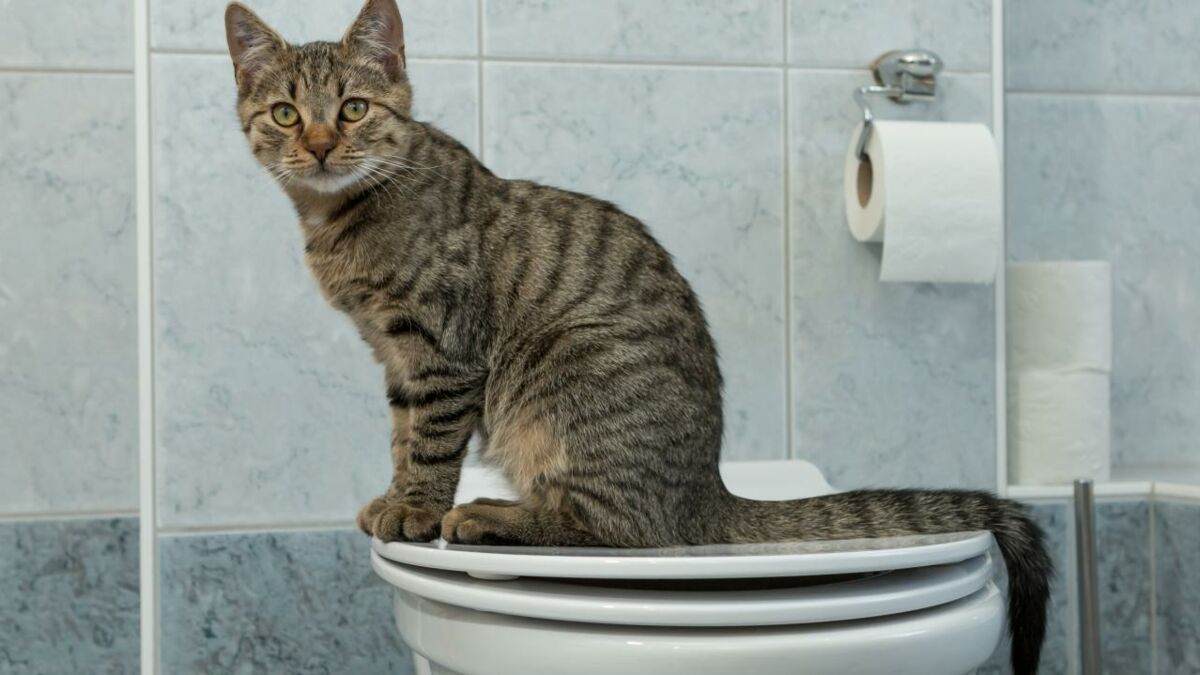What Flushing Animal Waste Down the Toilet May be Harmful
What Flushing Animal Waste Down the Toilet May be Harmful
Blog Article
How do you feel about Should you flush animal waste down the toilet?

When it involves taking care of waste, particularly animal waste, many individuals commonly consider the hassle-free choice of flushing it down the commode. However, this apparently easy service can have major effects for the setting and public health. In this article, we'll check out why flushing animal waste down the toilet is a poor idea and supply alternative methods for proper disposal.
Intro
Correct garbage disposal is critical for maintaining ecological sustainability and public health. While it may appear harmless to purge animal waste down the commode, it can lead to various concerns, both for the atmosphere and human well-being.
Threats of flushing pet waste
Environmental effect
Flushing pet waste presents dangerous germs and virus right into rivers, which can adversely impact water ecosystems. These pathogens can contaminate water sources and injury aquatic life, disrupting delicate environments.
Public health concerns
Animal waste includes dangerous microorganisms such as E. coli and Salmonella, which can pose major wellness risks to humans. Purging pet waste down the bathroom can infect water products, bring about the spread of conditions and infections.
Alternatives to flushing
As opposed to purging pet waste down the commode, there are several alternative disposal techniques that are more eco-friendly and sanitary.
Composting
Composting animal waste is an environment-friendly method to deal with it. By composting, organic matter is broken down right into nutrient-rich soil, which can be made use of to fertilize yards and plants.
Land fill disposal
Getting rid of animal waste in a garbage dump is one more option. While not as eco-friendly as composting, it is a safer option to flushing, as it stops the contamination of water sources.
Pet dog garbage disposal systems
There are specialized pet dog waste disposal systems readily available that safely and hygienically take care of click here animal waste. These systems usually use enzymes to break down waste and get rid of smells.
Actions to proper animal garbage disposal
To ensure appropriate disposal of pet waste, comply with these actions:
Scooping and landing waste
Frequently scoop and bag pet waste utilizing biodegradable bags. This stops waste from infecting the setting.
Making use of marked waste containers
Dispose of bagged animal waste in designated waste containers, such as garden compost containers or garbage dump bins. Avoid flushing it down the commode at all prices.
Cleansing litter boxes and pet locations consistently
Consistently clean litter boxes and pet locations to avoid the buildup of waste and microorganisms. Use pet-safe cleansing products to keep hygiene.
Benefits of correct disposal techniques
Adopting appropriate disposal methods for pet waste offers a number of advantages:
Decreased environmental pollution
Correct disposal methods minimize the threat of environmental pollution, safeguarding rivers and communities from contamination
Decreased risk of water contamination.
By avoiding flushing animal waste down the toilet, the risk of water contamination is considerably decreased, safeguarding public health.
Enhanced cleanliness and hygiene
Proper disposal approaches advertise better sanitation and hygiene, creating a much safer atmosphere for both people and animals.
Conclusion
In conclusion, purging pet waste down the bathroom is dangerous to the atmosphere and public health. By embracing different disposal approaches and complying with proper waste management practices, we can decrease the unfavorable impact of pet waste and contribute to a cleaner, much healthier world.
What To Do With Dog Poo – The Do's And Don'ts Of Disposing Of Faeces
Dog poo bins
Some councils provide dedicated dog waste bins in popular dog-walking areas that can take dog poo that has been bagged but you can legally dispose of dog waste in any public litter bin, as long as it is securely bagged. This also applies to your wheelie bin at home.
Do not flush
Water companies do not recommend flushing dog faeces down the toilet because certain parasites can survive the water processing treatment and are potentially harmful to humans. You should also never consider flushing dog poo that has been bagged down the toilet as the bags will not break down and instead create severe blockages in the sewage system.
In the woods
The Forestry Commission promotes a ‘stick and flick’ method for dealing with waste in the woods. This means finding a stick and using it to flick any poo from off the path so that it is out of the way of other walkers. You could also bury it as long as it is not in an area where there might be livestock.
Livestock
Parasites found in dog poo can be transmitted to livestock if they inadvertently eat infected faeces that has been left on grazing land. This could result in the death of sheep or abortion in cattle so you should always make sure you pick up your dog’s waste in fields where livestock could be present.

Consistently clean litter boxes and pet locations to avoid the buildup of waste and microorganisms. Use pet-safe cleansing products to keep hygiene.
Benefits of correct disposal techniques
Adopting appropriate disposal methods for pet waste offers a number of advantages:
Decreased environmental pollution
Correct disposal methods minimize the threat of environmental pollution, safeguarding rivers and communities from contamination
Decreased risk of water contamination.
By avoiding flushing animal waste down the toilet, the risk of water contamination is considerably decreased, safeguarding public health.
Enhanced cleanliness and hygiene
Proper disposal approaches advertise better sanitation and hygiene, creating a much safer atmosphere for both people and animals.
Conclusion
In conclusion, purging pet waste down the bathroom is dangerous to the atmosphere and public health. By embracing different disposal approaches and complying with proper waste management practices, we can decrease the unfavorable impact of pet waste and contribute to a cleaner, much healthier world.
What To Do With Dog Poo – The Do's And Don'ts Of Disposing Of Faeces
Dog poo bins
Some councils provide dedicated dog waste bins in popular dog-walking areas that can take dog poo that has been bagged but you can legally dispose of dog waste in any public litter bin, as long as it is securely bagged. This also applies to your wheelie bin at home.
Do not flush
Water companies do not recommend flushing dog faeces down the toilet because certain parasites can survive the water processing treatment and are potentially harmful to humans. You should also never consider flushing dog poo that has been bagged down the toilet as the bags will not break down and instead create severe blockages in the sewage system.
In the woods
The Forestry Commission promotes a ‘stick and flick’ method for dealing with waste in the woods. This means finding a stick and using it to flick any poo from off the path so that it is out of the way of other walkers. You could also bury it as long as it is not in an area where there might be livestock.
Livestock
Parasites found in dog poo can be transmitted to livestock if they inadvertently eat infected faeces that has been left on grazing land. This could result in the death of sheep or abortion in cattle so you should always make sure you pick up your dog’s waste in fields where livestock could be present.

I'm just very involved in 10 Things You Should Never Flush Down The Toilet and I really hope you enjoyed my blog entry. If you enjoyed reading our blog entry please make sure you remember to pass it around. Many thanks for taking the time to read it.
Call Report this page